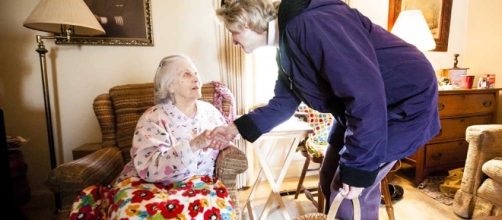With the number of aging American's on the rise, and the decline in the number of senior citizens benefiting from the Older Americans Act, supporters of Meals On Wheels say the organization is more needed than ever. The Older Americans Act, which is under the administration of the department of Health and Human Services accounts for 35 percent of total funding for Meals on Wheels.
In order to offset those funds, the organization relies heavily on donations. There is additional funding that comes from the federal Community Development Block Grants and Community Services block Grants, adding an additional 3 percent, to state and local level Meals on Wheels to cover net losses.
5,000 community-based programs
The organization received approximately $1,000 a day in unsolicited online donations prior to Trump's proposed budget. However, after the White House released its budget, last week, the organization started receiving over $100,000 in over a two-day-period.
A spokeswoman for Meals on Wheel America, Jenny Bertolette, assumes many people are now more concerned than ever for struggling seniors and want to ensure those in need continue being helped.
Programs need state & private contributions
Existing advocacy efforts like researching nutritional meals that benefit seniors and getting Congress to agree that access for seniors to federal programs must be improved is where much the money now coming is will go.
With more than 5,000 local and state delivery programs, Meals on Wheels – a public-private partnership, provides food to isolated, disabled and poor senior citizens. Their programs also offer safety and medical checks to those in need. The organization served roughly 2.4 million seniors, and over 500,000 veterans, last year, alone.
Two million volunteers strong
Meals on Wheels saves the federal government $34 billion in Medicare and Medicaid costs. Total nutritional programs add up to $1.43 billion each year.
Because of people's willingness and generosity to contribute, each in their own way, Meals on Wheels is a successful movement. Two million volunteers, across America, keeping seniors healthy and safe.

